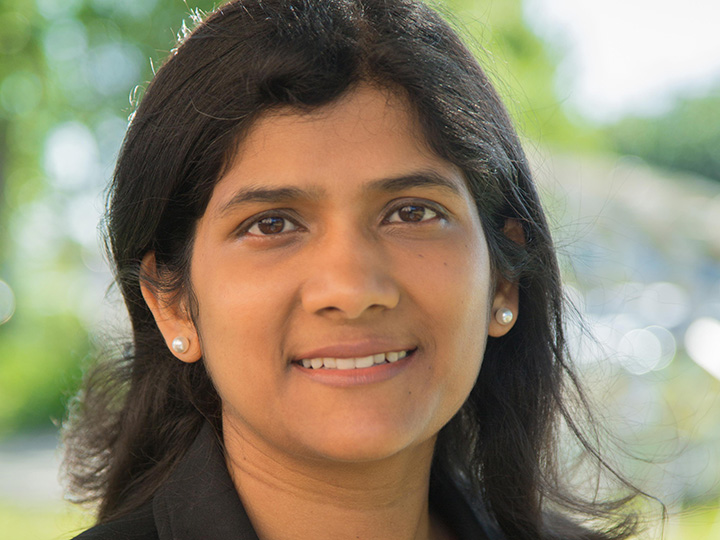Yashashree Kulkarni: Talking at the Atomic Level

In the Hewlett Packard Enterprise Data Science Center, you might think that the super computers run numbers to help us better understand outer space and the universe on a large-scale. But Yashashree Kulkarni, professor of mechanical engineering, finds her research results in the smallest of particles – the atom.
Whenever a material deforms or ultimately fails, it all starts at the scale of atoms, where defects are formed breaking the crystalline order,” said Kulkarni. “My work focuses mostly on understanding how these defects affect material behavior and how we can in fact use some of these defects to our advantage to create ultra-high strength materials.”
She recalls a quote by Sir Colin Humphreys, a famous materials scientist, that she works and lives by: “Crystals are like people; It is the defects in them that tend to make them interesting.”
- What do you enjoy most about the HPE Data Science Institute’s resources?
YK: I feel that the resources provided by the HPE Data Science Institute are a great asset which enable my group to carry out the exciting research that they are doing. As Director of the Research computing for the Cullen College of Engineering, I also appreciate the partnership of the HPE Data Science Institute with the Cullen College, which enabled us to acquire the latest state-of-the-art computing cluster, Carya.
- You are incredibly busy doing research, publishing articles and teaching classes. What is your favorite part of the research you do?
YK: My favorite part of research is the excitement of discovery. Whether the work proves the hypothesis we begin with or it leads to something that was unexpected, the exercise is intellectually fulfilling.
- Are there many women in your field?
YK: Traditionally, there were few women in computational mechanics, like other engineering disciplines. However, over recent years, this landscape is changing. The number of women in computational mechanics and materials science is growing. In fact, more women are joining academia and pursuing careers in research. This is a wonderful trend as they become fantastic role models for women who are passionate about graduate studies in this field.
- What is the main focus of your research?
YK: The focus of my research is to understand the behavior of materials at the scale of atoms by performing simulations that involve millions of atoms. These insights can ultimately enable us to design novel materials with extraordinary properties for specific applications. For instance, we can manipulate the arrangement of atoms in materials, such as copper and steel, to increase their strength ten-folds, while keeping them from becoming brittle (we call that being ductile). This is remarkable for applications such as turbines, nuclear power plants, biomedical implants and even the aerospace industry.
- What advice would you give other researchers about the computing resources at UH?
YK: I would encourage researchers and new faculty joining UH to visit the HPE Data Science Institute and learn about the amazing computing resources at UH. These not only include high performance computing clusters and visualization resources but also the technical support and educational resources.
- What motivates you in your personal life & your career?
YK: A sense of curiosity and wonder. I enjoy learning new things, be it any aspect of my life or career. It is certainly a guiding principle in my research. Outside of work, I enjoy reading, watching science fiction movies and singing. I was trained in Indian classical music when I was in school. Recently, I started taking Opera lessons to enrich my music practice. It has been a wonderful experience.